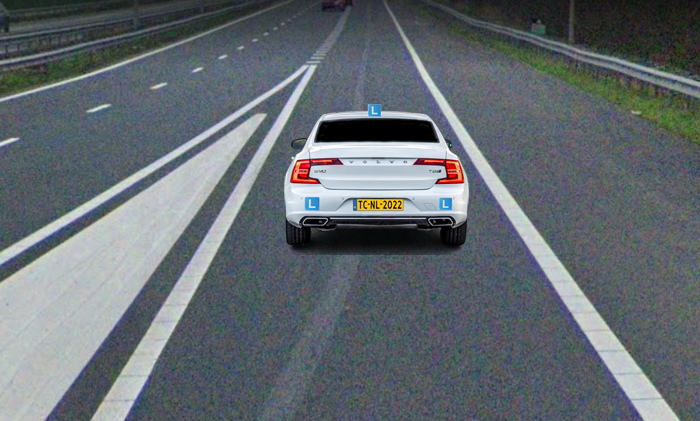Acceleration lane

There are 2 types of acceleration lanes. One is only for drivers who want to enter the continuous carriageway. The other is a combined acceleration/deceleration lane. This is for drivers who want to enter the continuous carriageway and for drivers who want to enter the combined acceleration/deceleration lane.
For both, it is necessary to first look carefully and then indicate direction.
Drivers who drive to the right of a block marking may overtake drivers to the left of that marking. Pay close attention: There are also acceleration lanes consisting of 2 lanes. Then you are not allowed to overtake the person on the right who is also driving on the acceleration lane.
At the end of an acceleration lane there is often an emergency lane (hard shoulder). Before the emergency lane begins, you must have merged. Using the emergency lane as an extended acceleration lane is prohibited. The emergency lane may only be used in an emergency (breakdown).
Merging is a special operation. This means that you must give way to drivers on the continuous carriageway. Yet we find it quite normal for cars to hold back or move up a lane to make room for the entrant. This is a favor, not a duty!
If the acceleration lane is also an deceleration lane (a combined acceleration/deceleration lane), then merging and exiting cars must give way to road users remaining in the same lane. So, does someone stay in the same lane and not change lanes? Then the driver who does change lanes and is performing a special maneuver, must give way to the driver on the other lane. If they both change lanes, the law does not specify which driver must give way to the other.
Tear past the traffic jam with your foot on the gas and resolutely throw your steering wheel to the left at the end of the acceleration lane. Want to bet that no one will let you in? Still, it is best for traffic flow to use the entire acceleration lane, even in a traffic jam. The sympathetic approach? Approach at an appropriate speed, try to estimate where you can squeeze in and drive towards it with a minimal(!) difference in speed. Oh, and smile at the driver giving you space. You know you want to merge, but other traffic can’t read minds.
Moreover, it is mandatory to use the turn signal. But before you do, determine where you want to merge. Look in the interior mirror, left side mirror and over your left shoulder – not backwards! Be aware of hasty drivers behind you who have already started merging (blind spot). If the road is clear, indicate direction and enter the continuous carriageway in one smooth motion.
When merging, you may overtake if you drive on the right of the block markings, for example if you want to merge in front of a lorry driving slower than the permitted speed. Leave enough space in front of the truck so it does not have to reduce speed for you. By taking a wide margin, you also prevent the traffic in the lane next to the truck (which moves back to the right lane after overtaking) from overlooking you.
